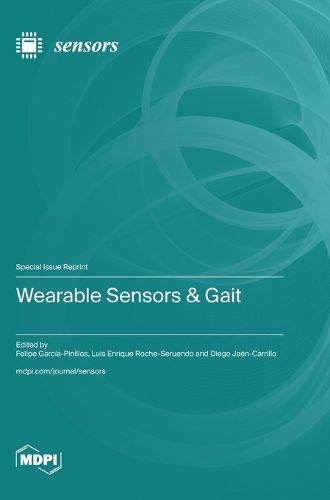Readings Newsletter
Become a Readings Member to make your shopping experience even easier.
Sign in or sign up for free!
You’re not far away from qualifying for FREE standard shipping within Australia
You’ve qualified for FREE standard shipping within Australia
The cart is loading…






This title is printed to order. This book may have been self-published. If so, we cannot guarantee the quality of the content. In the main most books will have gone through the editing process however some may not. We therefore suggest that you be aware of this before ordering this book. If in doubt check either the author or publisher’s details as we are unable to accept any returns unless they are faulty. Please contact us if you have any questions.
Gait analysis has been traditionally conducted in laboratory settings and, therefore, has required specific conditions and expensive equipment. The emergence of wearable sensors has solved the lack of ecology for these measurements and offers a more economical and easier-to-use option to perform gait analysis. Lately, such sensors have allowed the quantification of performance and workload by providing mechanical and physiological parameters, and their popularity has grown exponentially. In this context, more and more wearable sensors are commercially available and, when applied to gait analysis (either walking or running), these devices are able to provide both kinetic and kinematic variables, consequently improving the feasibility and testing time of such assessments and, therefore, becoming a real alternative for clinicians, researchers, and sport practitioners. The incremental growth in big data, cloud computing, and artificial intelligence makes these sensors suitable to connect gait biomechanics with real-life and real-time analysis. All these benefits broaden the possibilities, among others, to provide real-time biofeedback while walking and running, or to integrate sensors with cloud platforms or mobile apps to improve health and/or performance. This Special Issue collected research and contributions on the use and application of wearable sensors for gait assessment and analysis.
$9.00 standard shipping within Australia
FREE standard shipping within Australia for orders over $100.00
Express & International shipping calculated at checkout
This title is printed to order. This book may have been self-published. If so, we cannot guarantee the quality of the content. In the main most books will have gone through the editing process however some may not. We therefore suggest that you be aware of this before ordering this book. If in doubt check either the author or publisher’s details as we are unable to accept any returns unless they are faulty. Please contact us if you have any questions.
Gait analysis has been traditionally conducted in laboratory settings and, therefore, has required specific conditions and expensive equipment. The emergence of wearable sensors has solved the lack of ecology for these measurements and offers a more economical and easier-to-use option to perform gait analysis. Lately, such sensors have allowed the quantification of performance and workload by providing mechanical and physiological parameters, and their popularity has grown exponentially. In this context, more and more wearable sensors are commercially available and, when applied to gait analysis (either walking or running), these devices are able to provide both kinetic and kinematic variables, consequently improving the feasibility and testing time of such assessments and, therefore, becoming a real alternative for clinicians, researchers, and sport practitioners. The incremental growth in big data, cloud computing, and artificial intelligence makes these sensors suitable to connect gait biomechanics with real-life and real-time analysis. All these benefits broaden the possibilities, among others, to provide real-time biofeedback while walking and running, or to integrate sensors with cloud platforms or mobile apps to improve health and/or performance. This Special Issue collected research and contributions on the use and application of wearable sensors for gait assessment and analysis.